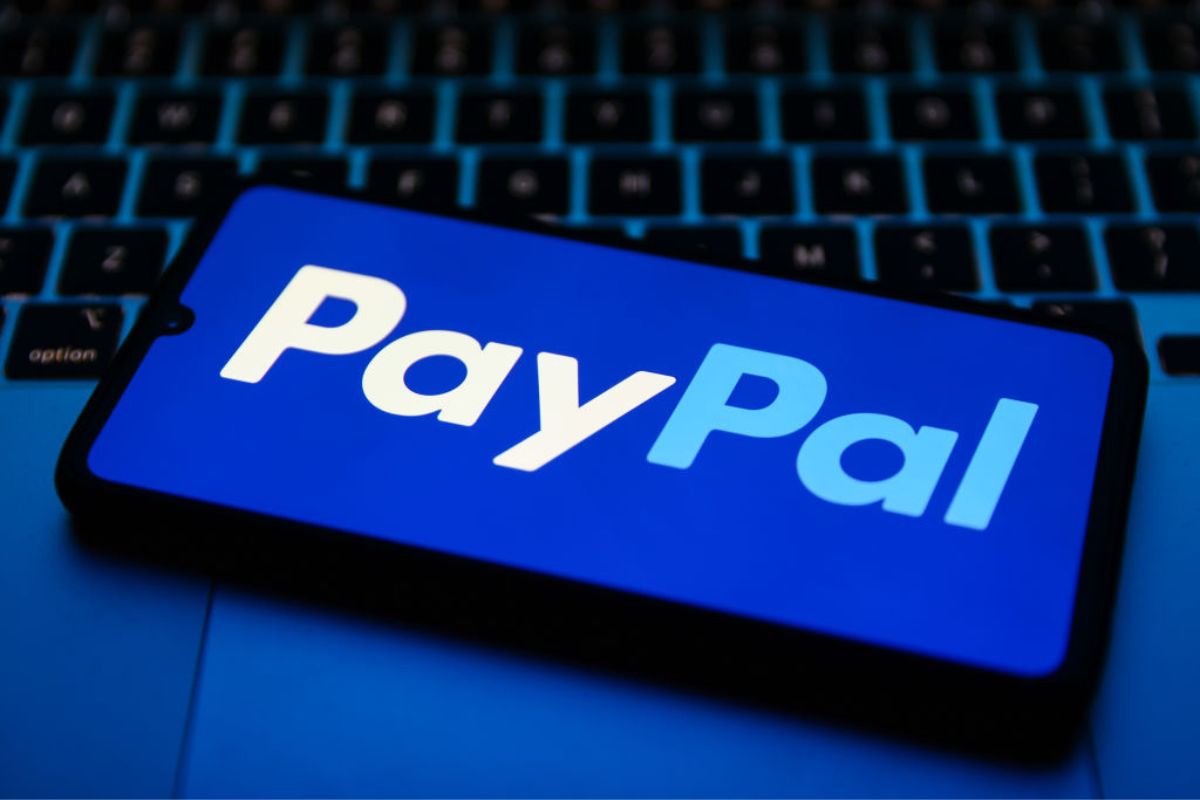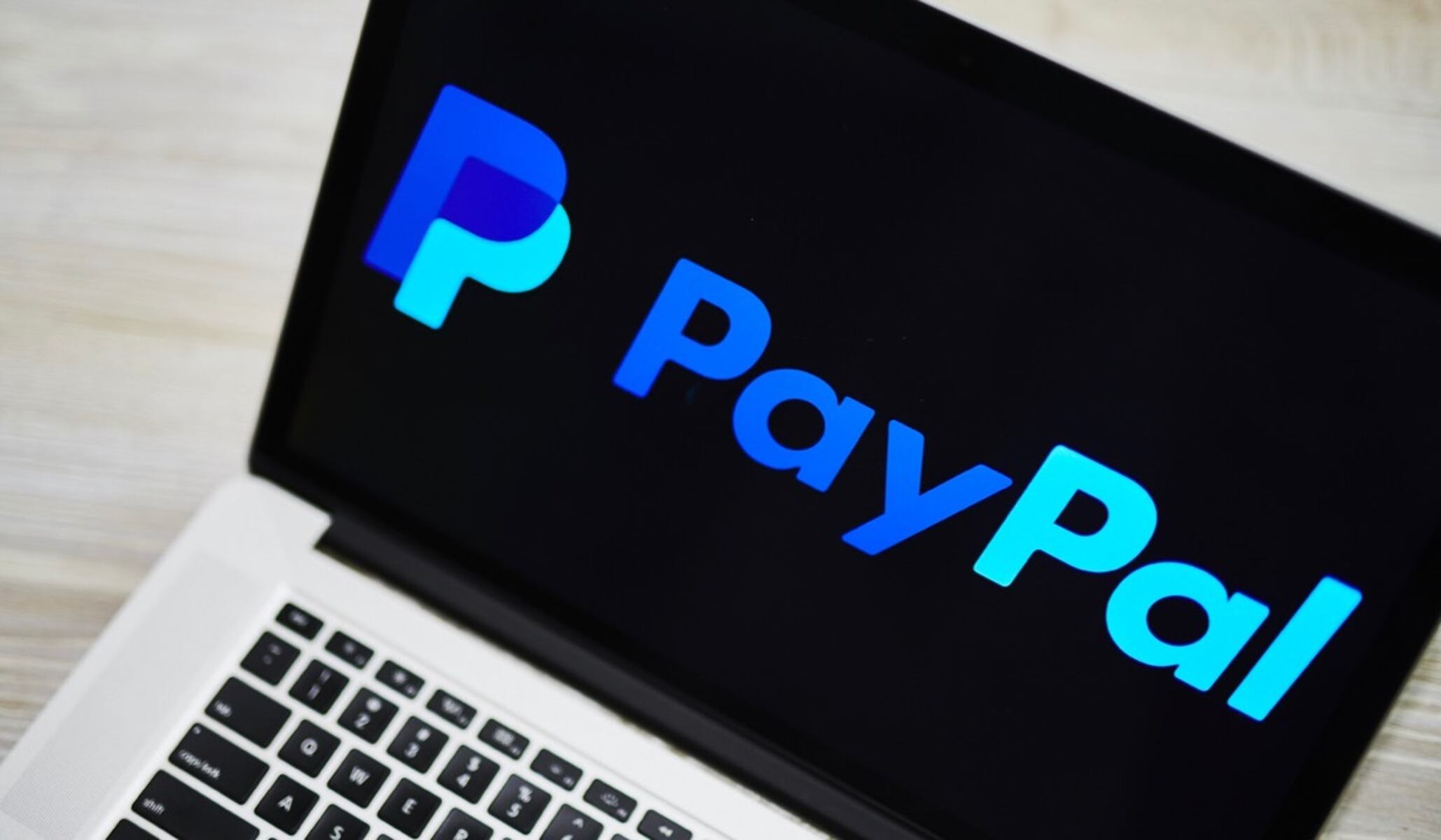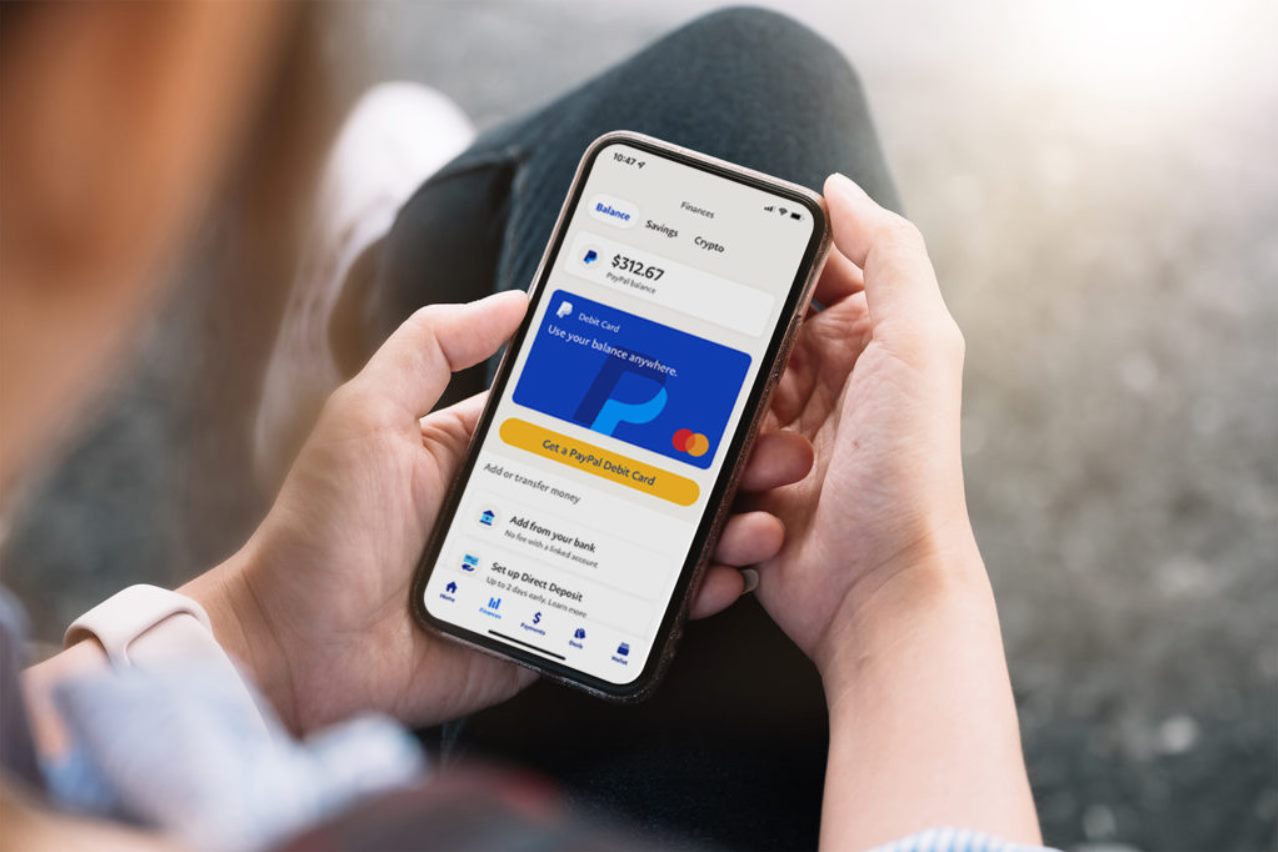Introduction
Welcome to the world of online payments, where convenience and security meet. PayPal has become a household name when it comes to making online transactions. Whether you are an individual freelancer, a small business owner, or an e-commerce giant, utilizing PayPal as a payment gateway can streamline your financial operations.
However, like any other service, PayPal charges fees for its services. Understanding these fees is essential to ensure you have a clear idea of the costs associated with using PayPal for your online transactions. In this article, we will explore the different fees that PayPal imposes and provide you with insights on how to calculate and minimize these fees.
From the moment you sign up for a PayPal account, it’s important to familiarize yourself with their fee structure. Knowing the ins and outs of PayPal fees will enable you to make informed decisions and manage your finances efficiently.
During the course of this article, we will delve into various fee categories imposed by PayPal, including domestic and international transaction fees, currency conversion fees, fees for receiving payments, fees for withdrawing funds, as well as fees for refunds and chargebacks. Understanding these fees will empower you to optimize your payment processes and minimize unnecessary costs.
Buckle up as we take a ride through the world of PayPal fees. Whether you’re a PayPal novice or a seasoned user, this article will provide you with valuable insights and essential tips to navigate the intricate web of PayPal fees, ultimately helping you make smarter financial decisions for your online transactions.
Overview of PayPal Fees
As a user of PayPal, it’s important to understand the various fees associated with using their services. PayPal charges fees for specific transactions and services, and these charges can vary depending on factors such as the type of transaction, currency involved, and the location of the transaction.
Generally, PayPal fees can be categorized into the following areas:
- Domestic Transaction Fees: These fees apply when you receive payments within your country. PayPal charges a percentage fee based on the transaction amount, plus a fixed fee per transaction. The specific fee percentages and fixed amounts can vary depending on your country or region.
- International Transaction Fees: If you receive payments from customers outside your country, international transaction fees may apply. PayPal charges a higher percentage fee for international transactions, along with a fixed fee per transaction.
- Currency Conversion Fees: When you receive payments in a different currency than your account’s primary currency, PayPal applies a currency conversion fee. This fee is typically a percentage of the total amount being converted, and it ensures that the payment is converted to your primary currency at an exchange rate set by PayPal.
- Receiving Payments Fee: Although most transactions involve fees for sellers, there are instances where fees may apply to the recipient as well. For example, if you receive payments for selling goods or services, you may be subject to fees based on the transaction type.
- Withdrawing Funds Fee: When you want to transfer funds from your PayPal account to your bank account, PayPal may charge a fee for the withdrawal. This fee can vary depending on the country and the withdrawal method you choose.
- Refunds and Chargebacks Fee: In cases where you need to issue a refund to a customer or if a chargeback occurs, PayPal may charge a fee. This fee is typically a fixed amount per refunded or disputed transaction.
Understanding these various fees will help you calculate the costs associated with using PayPal for your transactions. In the following sections, we will explore each fee category in more detail and provide tips on how to calculate and minimize these fees when using PayPal.
PayPal Fee for Domestic Transactions
When it comes to domestic transactions, PayPal charges fees based on the location where the payment is received. The specific fee structure can vary depending on your country or region. It’s important to familiarize yourself with the fees applicable to your location to accurately calculate the costs associated with your transactions.
In domestic transactions, PayPal typically charges a percentage fee on the transaction amount, along with a fixed fee per transaction. The percentage fee can range from a few percentage points to a higher percentage, depending on the country. The fixed fee per transaction is a set amount that remains constant regardless of the transaction amount.
For example, let’s say you’re selling a product domestically for $100. If PayPal charges a 2.9% fee and a fixed fee of $0.30 per transaction, your fees would be calculated as follows:
- Percentage fee: $100 x 2.9% = $2.90
- Fixed fee: $0.30
- Total fee: $2.90 + $0.30 = $3.20
So, for this hypothetical domestic transaction, you would be charged a total fee of $3.20.
It’s important to keep in mind that PayPal fees can impact your profit margins, especially for small businesses or individuals selling lower-priced items. Therefore, it’s crucial to factor in these fees when setting prices for your products or services.
To avoid any surprises, make sure to review PayPal’s fee structure for your particular country or region. PayPal provides detailed information about the specific fees on their website, including the applicable percentage fee and fixed fee per transaction.
By understanding the fee structure for domestic transactions, you can accurately calculate the costs associated with using PayPal to receive payments within your country. This awareness will enable you to optimize your pricing strategy and consider any necessary adjustments to ensure profitability.
PayPal Fee for International Transactions
When conducting international transactions, PayPal charges different fees compared to domestic transactions. International transaction fees are typically higher to account for additional costs and complexities associated with cross-border payments.
The fee structure for international transactions varies depending on the country and currency involved. PayPal charges a percentage fee on the transaction amount, similar to domestic transactions, but the percentage fee is typically higher for international payments. In addition to the percentage fee, PayPal also imposes a fixed fee per transaction for international transactions.
For example, let’s say you sell a product to an international customer for $100. If PayPal charges a 4.4% fee and a fixed fee of $0.30 per transaction, the fees for this international transaction would be calculated as follows:
- Percentage fee: $100 x 4.4% = $4.40
- Fixed fee: $0.30
- Total fee: $4.40 + $0.30 = $4.70
Based on this calculation, the total fee for this hypothetical international transaction would be $4.70.
It’s essential to consider these fees when selling products or services to customers outside your country. Make sure to factor in the higher percentage fee and the fixed fee when setting prices for international transactions. This will help you maintain profitability while accounting for the additional costs associated with cross-border payments.
Furthermore, keep in mind that currency conversion fees may also apply when receiving payments in a different currency than your PayPal account’s primary currency. PayPal applies a currency conversion fee, which is typically a percentage of the total amount being converted. This fee ensures that the payment is converted to your primary currency at an exchange rate set by PayPal.
To determine the specific fees applicable to international transactions based on your location, refer to PayPal’s website. They provide comprehensive information about the percentage fee, fixed fee per transaction, and currency conversion fees for various countries and regions.
By understanding the fee structure for international transactions, you can accurately calculate the costs associated with cross-border payments. This knowledge will enable you to make informed decisions when selling to customers outside your country, ensuring that you consider any necessary adjustments to price your products or services appropriately.
PayPal Currency Conversion Fee
When conducting international transactions or receiving payments in a different currency than your PayPal account’s primary currency, PayPal applies a currency conversion fee. This fee ensures that the payment is converted to your account’s primary currency at an exchange rate set by PayPal.
The currency conversion fee is typically a percentage of the total amount being converted. The specific percentage can vary, and it’s important to review PayPal’s fee structure for your country or region to understand the exact fee percentage.
For example, let’s say you receive a payment in euros (EUR) but your PayPal account’s primary currency is U.S. dollars (USD). If PayPal charges a currency conversion fee of 3.5%, and the payment amount is 500 EUR, the currency conversion fee would be calculated as follows:
- Conversion fee: 500 EUR x 3.5% = 17.50 EUR
In this scenario, the currency conversion fee would be 17.50 EUR. The converted amount in your PayPal account’s primary currency (USD) will reflect this fee deduction.
It’s important to consider the currency conversion fee when receiving payments in different currencies. This fee can impact your overall revenue and should be factored into your pricing strategy or budgeting calculations.
Keep in mind that PayPal’s currency conversion rates may not always align with the current market rates. The exchange rate used by PayPal for currency conversion can have a slight markup, which contributes to the currency conversion fee.
If you frequently receive payments in multiple currencies or operate in an international market, you may consider opening multiple currency balances within your PayPal account. This feature allows you to hold and manage balances in different currencies, helping you minimize currency conversion fees.
As fees and charges can vary based on your location and currency preferences, it’s important to review PayPal’s guidelines and resources to understand the exact currency conversion fees applicable to your account. By staying informed about these fees, you can accurately calculate the costs associated with currency conversion and make informed decisions for your international transactions.
PayPal Fee for Receiving Payments
When you receive payments for goods or services through PayPal, fees may apply depending on the type of transaction. These fees are typically borne by the seller or recipient of the payment. It’s important to understand the different fee structures for receiving payments to accurately calculate the costs associated with using PayPal.
The specific fees for receiving payments can vary based on factors such as the transaction type, location, and currency involved. It’s essential to familiarize yourself with the fee structure applicable to your country or region to determine the costs associated with receiving payments.
In general, PayPal charges a percentage fee on the transaction amount, plus a fixed fee per transaction. The percentage fee can vary, but it is typically lower for receiving payments compared to fees for selling goods or services.
For example, let’s say you receive a payment of $500 for a service you provided. If PayPal charges a 2.9% fee and a fixed fee of $0.30 per transaction for receiving payments, the fees would be calculated as follows:
- Percentage fee: $500 x 2.9% = $14.50
- Fixed fee: $0.30
- Total fee: $14.50 + $0.30 = $14.80
Based on this calculation, the total fee for receiving this payment would be $14.80.
Understanding the fees for receiving payments is crucial when setting prices or quoting clients for your products or services. These fees can impact your profit margins, and it’s important to account for them in your pricing strategy.
It’s worth noting that in certain cases, such as personal transactions or friends and family payments, PayPal may not charge any fees. However, when conducting business transactions or receiving payments for goods and services, fees will apply.
Review PayPal’s fee structure for your specific country or region to gain a comprehensive understanding of the fees associated with receiving payments. PayPal provides detailed information on their website, including the applicable percentage fee and fixed fee per transaction.
By understanding the fee structure for receiving payments, you can accurately calculate the costs associated with using PayPal as a payment gateway. This knowledge will help you make informed decisions when pricing your products or services and ensure that you consider any necessary adjustments to maintain profitability.
PayPal Fee for Withdrawing Funds
When you want to transfer funds from your PayPal account to your bank account, PayPal may charge a fee for the withdrawal. This fee can vary depending on the country and the withdrawal method you choose.
The specific fee structure for withdrawing funds can depend on factors such as your location, the currency being withdrawn, and the withdrawal method. It’s important to review PayPal’s guidelines and fee structure to understand the costs associated with withdrawing funds from your PayPal account.
In general, PayPal charges a flat fee for withdrawals, regardless of the withdrawal amount. The fee can vary depending on your country and the method of withdrawal you select. Common withdrawal methods include bank transfers, debit cards, or checks.
For example, let’s say you want to withdraw $1,000 from your PayPal account to your bank account. If PayPal charges a withdrawal fee of $1 for bank transfers, the total fee for this withdrawal would be $1.
It’s important to note that the fees for withdrawing funds can depend on various factors and may change over time. Therefore, it’s recommended to regularly check PayPal’s website or contact their customer support for the most up-to-date information.
By understanding the fees associated with withdrawing funds from your PayPal account, you can budget and plan accordingly. It’s essential to factor in these fees when deciding the timing and frequency of your withdrawals, ensuring you optimize your financial management while minimizing unnecessary costs.
Additionally, consider weighing the pros and cons of different withdrawal methods. Some methods may have higher fees but offer faster withdrawal times, while others may have lower fees but longer processing times. Evaluating these factors will help you choose the most cost-effective and convenient withdrawal method for your specific needs.
Always keep in mind that PayPal’s fee structure can vary depending on your location and the withdrawal method you choose. Familiarize yourself with the specific fees applicable to your situation to accurately calculate the costs associated with withdrawing funds from your PayPal account.
PayPal Fee for Refunds and Chargebacks
In certain situations, such as customer returns or disputes, you may need to issue refunds or encounter chargebacks on transactions processed through PayPal. When refunds or chargebacks occur, PayPal may charge a fee to cover administrative costs and handling these processes.
The specific fees for refunds and chargebacks can vary based on the country or region. PayPal typically imposes a fixed fee for each refund or chargeback, regardless of the transaction amount. It’s important to acquaint yourself with the refund and chargeback fee structure applicable to your location to accurately calculate the costs associated with these processes.
For instance, if you need to issue a refund of $100 to a customer, and PayPal charges a refund fee of $0.30 per transaction, the fee for this refund would be $0.30.
On the other hand, if a customer initiates a chargeback dispute, PayPal may charge a chargeback fee. This fee covers the administrative costs associated with handling the dispute. The chargeback fee is typically a fixed amount, irrespective of the transaction value.
It’s important to note that chargebacks can result in additional costs beyond the chargeback fee itself. If a chargeback is decided in favor of the customer, you may also be responsible for not only the chargeback fee but also the refund amount.
Chargebacks can impact your seller reputation, and PayPal may also place a temporary hold on funds related to the disputed transaction until the matter is resolved. Therefore, it’s crucial to maintain excellent customer service, clear communication, and proper record-keeping to minimize the occurrence of chargebacks.
Understanding the fees for refunds and chargebacks is essential for managing your business’s financials effectively. By factoring in these fees when calculating profits and setting prices, you can mitigate any potential financial impact resulting from refunds or chargebacks.
Review PayPal’s fee structure for your specific country or region to obtain detailed information about the fees associated with refunds and chargebacks. Staying informed about these fees will help you accurately calculate the costs involved and make informed decisions when managing customer returns or handling disputes.
How to Calculate PayPal Fees
Calculating PayPal fees is essential to understand the costs associated with using PayPal for your transactions. By accurately estimating the fees, you can factor them into your pricing strategy and budgeting calculations. Here’s a step-by-step guide on how to calculate PayPal fees:
- Determine the transaction amount: Begin by identifying the total amount of the transaction, whether it’s a sale, a payment received, or a refund.
- Review the fee structure: Familiarize yourself with PayPal’s fee structure for your country or region. Take note of the percentage fee and fixed fee per transaction applicable to the specific type of transaction.
- Calculate the percentage fee: Multiply the transaction amount by the percentage fee to determine the fee based on a percentage of the transaction.
- Add the fixed fee: Add the fixed fee per transaction to the percentage fee calculated in the previous step.
- Obtain the total fee: The sum of the percentage fee and the fixed fee is the total fee you will be charged for the transaction.
For example, let’s say you receive a payment of $200 for a service, and PayPal charges a 2.9% fee with a fixed fee of $0.30 per transaction. The calculation would be as follows:
- Percentage fee: $200 x 2.9% = $5.80
- Fixed fee: $0.30
- Total fee: $5.80 + $0.30 = $6.10
In this scenario, the total fee for receiving a payment of $200 would be $6.10.
It’s important to keep in mind that the fee structure can vary based on the transaction type, location, and currency involved. Some transaction types, such as personal payments or friends and family payments, may have different fee structures or no fees at all.
Additionally, PayPal’s currency conversion fees should be considered if you receive payments in a different currency than your account’s primary currency. Make sure to account for the currency conversion fee, which is typically a percentage of the converted amount.
By following these steps and staying updated with PayPal’s fee structure, you can accurately calculate the fees associated with your transactions. This knowledge empowers you to make informed decisions regarding pricing, profitability, and budgeting when using PayPal as a payment gateway.
Tips to Minimize PayPal Fees
While PayPal fees are a part of conducting online transactions, there are several strategies you can employ to minimize these fees and optimize your financial management. By implementing these tips, you can save money and maximize your profitability. Here are some valuable tips to minimize PayPal fees:
- Understand the fee structure: Familiarize yourself with PayPal’s fee structure for your country or region. Stay updated with the latest fee percentages and fixed fees applicable to different transaction types to accurately calculate your costs.
- Consider transaction types: Explore PayPal’s different transaction types and choose the one that aligns best with your needs. Ensure that you’re utilizing the transaction type with the lowest fees for your specific situation.
- Currency management: If you frequently receive payments in multiple currencies, consider opening multiple currency balances within your PayPal account. Holding balances in different currencies allows you to minimize currency conversion fees associated with receiving payments in foreign currencies.
- Set appropriate prices: Factor in PayPal fees when setting the prices for your products or services. Account for the transaction fees, currency conversion fees, and other applicable charges to ensure your prices are profitable and cover the associated costs.
- Choose a strategic withdrawal schedule: Evaluate your cash flow needs and plan your withdrawals accordingly. Consolidating smaller withdrawals into a single transaction can help minimize the fixed withdrawal fees.
- Explore alternative payment methods: Depending on your target audience and business model, consider exploring other payment gateways or platforms that may offer lower fees or more flexible fee structures. Compare the fees and services provided by different providers to find the most cost-effective option for your specific requirements.
- Offer incentives for alternative payment methods: Encourage customers to use payment methods that have lower fees or no fees at all, such as bank transfers or direct debit. Incentivizing such payment methods can help you save on transaction fees associated with credit card payments.
- Maintain open communication: Clear communication with customers can reduce the chances of disputes, chargebacks, and refunds, which potentially incur additional fees. Provide detailed product descriptions, respond to inquiries promptly, and address any concerns to minimize the risk of customer dissatisfaction.
Implementing these tips will help you minimize PayPal fees and optimize your financial operations. Remember to regularly review PayPal’s fee structure and stay updated on any changes or updates to ensure you’re utilizing the most cost-effective strategies.
By employing these fee-minimization techniques, you can operate your online business more efficiently, maximize your profits, and maintain a positive financial outlook.
Conclusion
Understanding and managing PayPal fees is crucial for anyone utilizing the platform for online transactions. By having a clear understanding of the fee structure and implementing strategies to minimize fees, you can optimize your financial management and maximize profitability.
In this article, we explored the various types of PayPal fees, including domestic and international transaction fees, currency conversion fees, fees for receiving payments, fees for withdrawing funds, and fees for refunds and chargebacks. Each fee category carries its own set of considerations and calculations.
We learned that accurate fee calculation involves knowing the transaction amount, reviewing PayPal’s fee structure, and calculating the percentage fee and fixed fee per transaction. Additionally, we discussed tips to minimize PayPal fees, such as understanding the fee structure, considering transaction types, managing currencies, setting appropriate prices, strategic withdrawal schedules, exploring alternative payment methods, incentivizing lower fee payment options, and maintaining open communication with customers.
By implementing these tips and strategies, you can reduce the impact of PayPal fees on your financial operations. However, it’s essential to stay updated with PayPal’s fee structure and policies as they may change over time. Regularly reviewing the fee structure and seeking information directly from PayPal will ensure you have the most accurate and current fee information.
Remember, while fees are a part of using PayPal, optimizing your processes and being aware of fee-minimization strategies can help you make the most of your transactions. With this knowledge in hand, you are equipped to navigate the world of PayPal fees with confidence, ensuring that your online financial operations are both efficient and cost-effective.

























